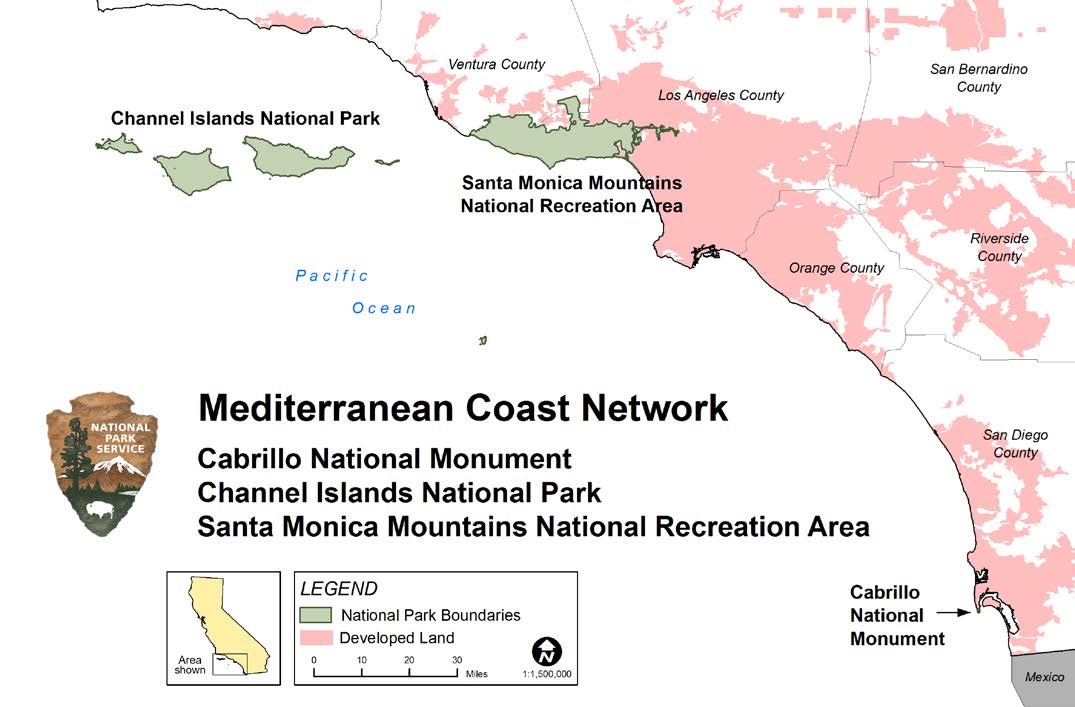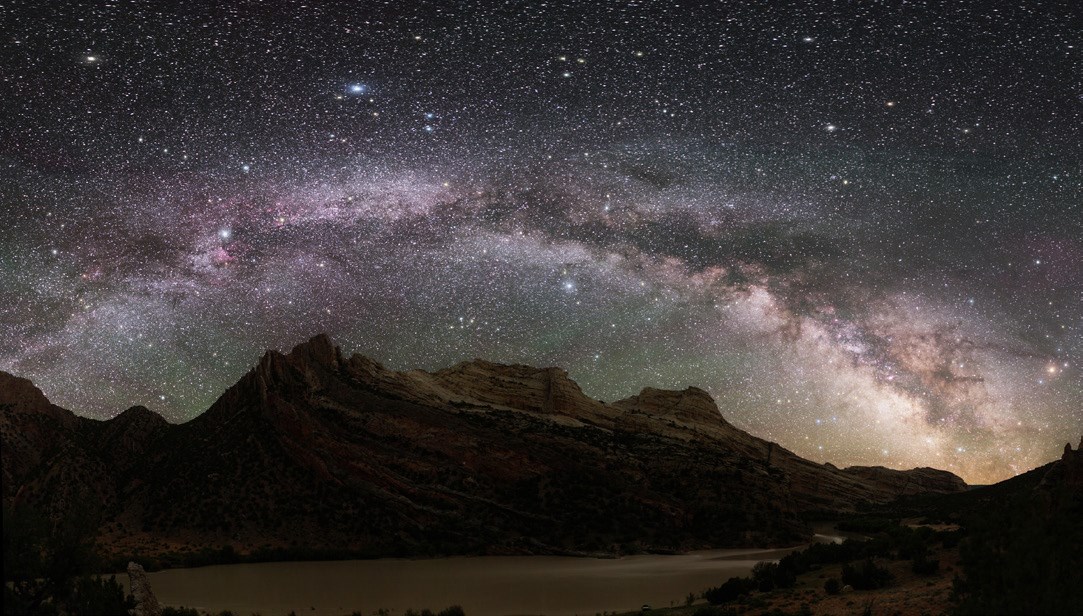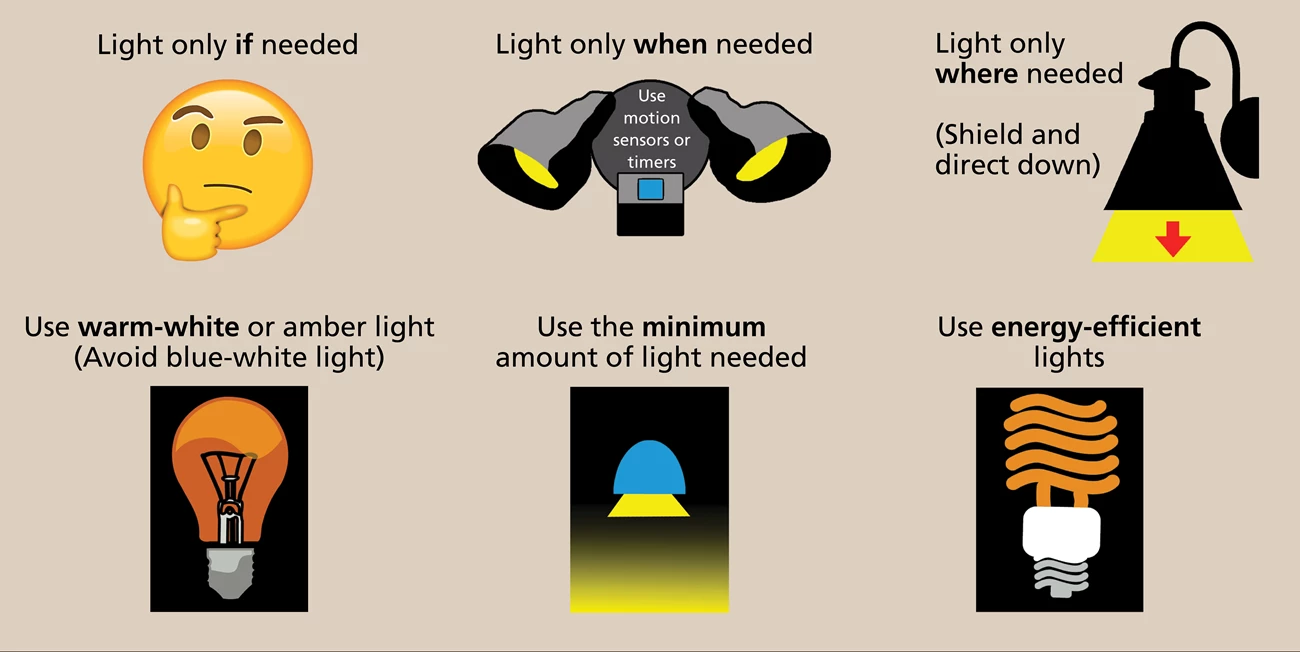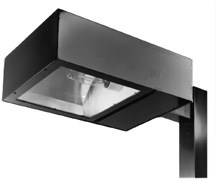Last updated: May 9, 2023
Article
Night Sky Darkness in Coastal Southern California National Parks

The velvet black of a dark night sky offers many values. People seek darkness for stargazing. Birds navigate by starlight. Prey hides from predator in the dark. But light pollution from human development—streetlights, buildings and other sources of artificial light—is spilling over into natural areas and taking an ecological toll. Light pollution can be directly fatal to wildlife, interfere with reproduction and movements, upset predator–prey dynamics, and even affect human health. In Southern California, the National Park Service is monitoring the night sky of its parks and applying best practices to improve night sky darkness.
Light pollution...

...attracts and disorients animals
Millions of migratory birds become disoriented at night and die each year after colliding with brightly lit buildings. Seabirds, many species facing global declines, are also vulnerable to light pollution. Nocturnally active seabirds—especially fledglings—can be attracted to and disoriented by light pollution; many are injured or die after colliding with objects or after becoming grounded and vulnerable to predators. Local seabirds, like the Ashy Storm-Petrel that breeds on the Channel Islands, are particularly at risk.

...interferes with reproduction
For many animals, attracting a mate means sending out signals. What happens when your signal gets interrupted? Tree frogs have been found to stop or reduce their nighttime chorusing in the presence of light pollution.

...affects human health
Light pollution suppresses the production of the sleep-inducing chemical, melatonin, in humans. This can potentially disrupt our circadian rhythms and overall health.
How Dark Are Night Skies in Coastal Southern California National Parks?
In Southern California, the Mediterranean Coast Inventory and Monitoring Network of the National Park Service has collaborated with University of California—Los Angeles researchers to find out where and how much light pollution currently exists.
Their recently released report1 examined 20-year trends (1992–2012) in light pollution in three Southern California national parks. They also compared them with light pollution values for the year 2012 at 59 other national parks. Understanding where light pollution occurs is the first step in addressing this problem.

Cabrillo National Monument – On the Upswing
Perched on the tip of Point Loma in the city of San Diego, Cabrillo NM had one of the highest light pollution values of all 59 parks. The trend since 1992, however, both in and around the monument, has been a decline in light pollution.
Channel Islands National Park – Stellar Night Skies
Light pollution at Channel Islands NP has remained remarkably low since 1992, making it one of the darkest of all 59 parks.
Santa Monica Mountains National Recreation Area– Holding Steady but Much Room for Improvement
Nestled up against the Los Angeles metropolitan area, the Santa Monica Mountains NRA had the third highest light pollution of all 59 parks. Since 1992, however, light pollution in this park has remained stable, with an overall slight reduction over time.
In Search of the Milky Way

Can you see our home galaxy, the Milky Way, from your porch at night? Its cloudy, mottled white shape arcing across the night sky used to be visible from all places on Earth. Light pollution now obscures it from one third of humanity. For a glimpse of this natural wonder, find a dark spot—perhaps in a nearby national park—and follow these tips:
- Stargaze on clear nights during the new moon phase of the month
- Aim for summer, when the Milky Way is highest in the night sky
- Find the constellation, Sagittarius, where the Milky Way is brightest
What Can You Do to Protect Dark Night Skies?
Principles of Night Sky Friendly Lighting2

NPS

Learn More or Get Involved
1Gillispie et al. 2016. The distribution and dynamics of nighttime lights in the Mediterranean Coast Network of Southern California: Cabrillo National Monument, Channel Islands National Park, Santa Monica Mountains National Recreation Area. Natural Resource Report NPS/MEDN/NRR—2016/1290. National Park Service, Fort Collins, Colorado.
2National Park Service Natural Sounds & Night Skies Division
International Dark-Sky Association
Contact
Stacey Ostermann-Kelm
Program Manager
Mediterranean Coast I&M Network
stacey_ostermann@nps.gov
805-370-2347
Download a printable pdf brief of this article.
Prepared by Sonya Daw and the Mediterranean Coast Network
